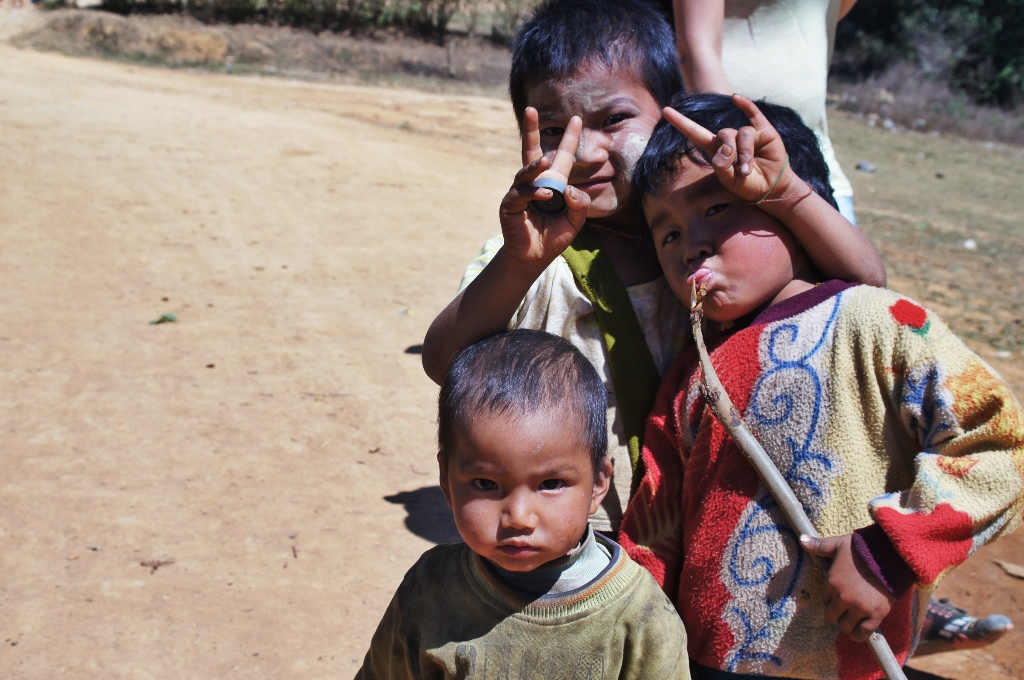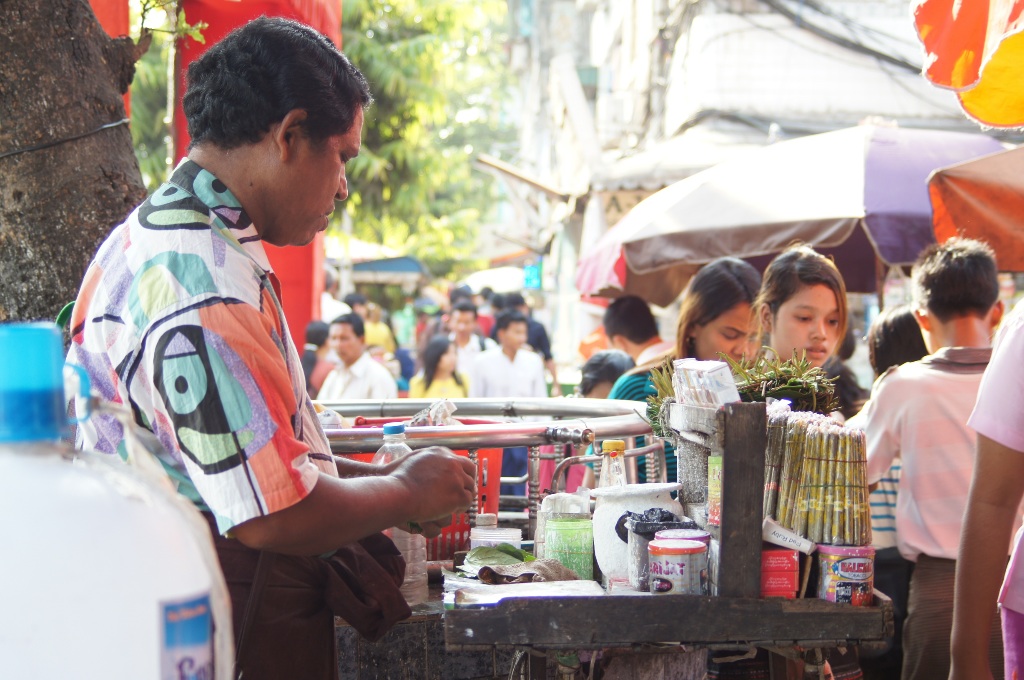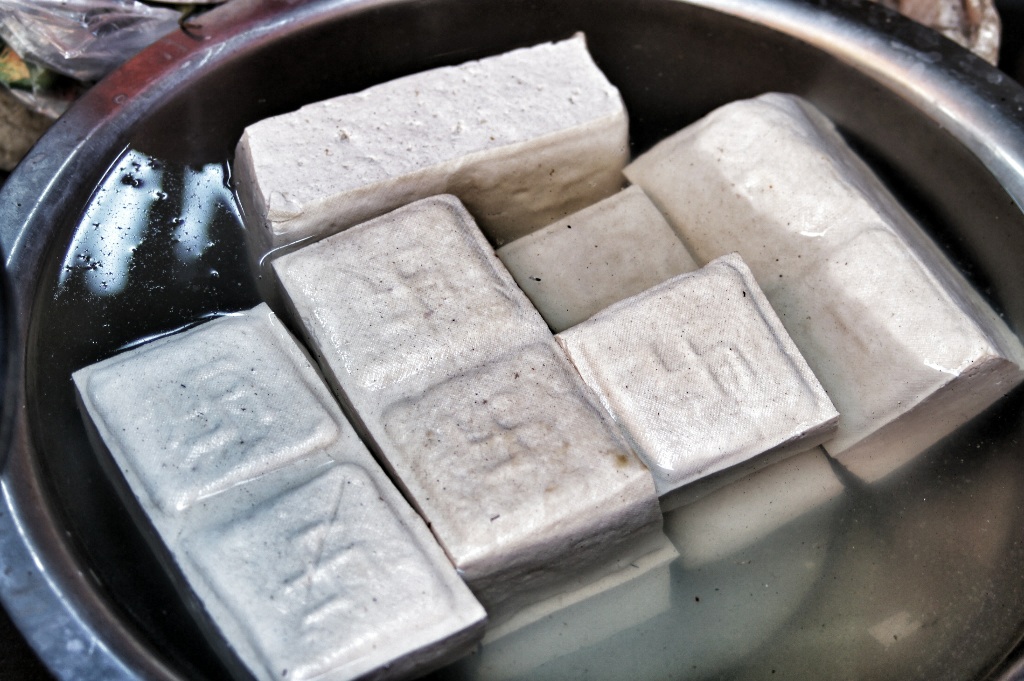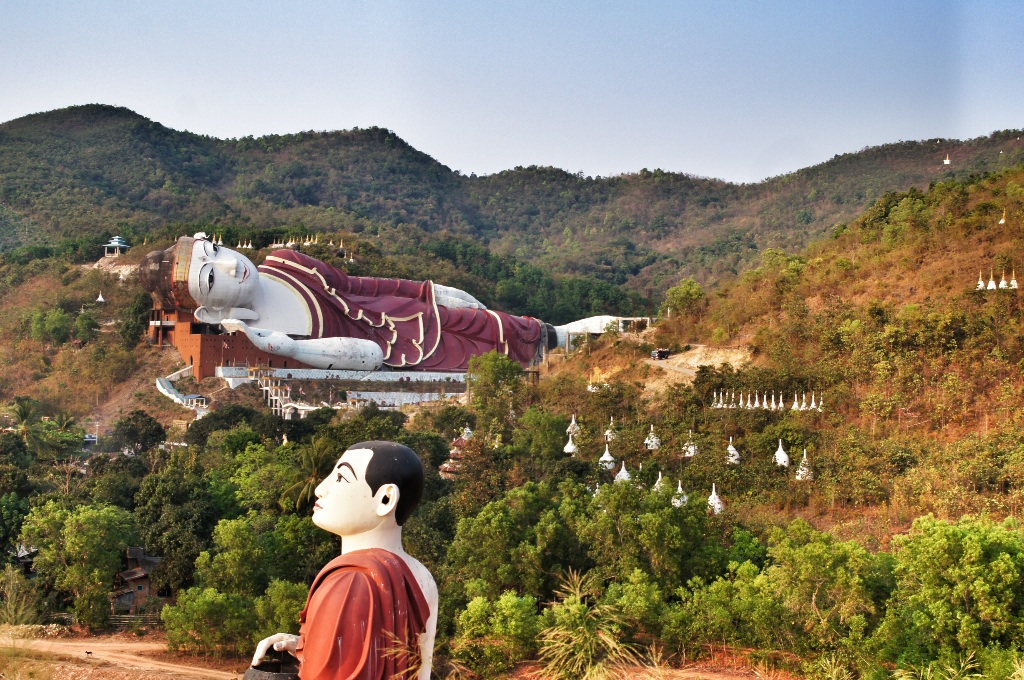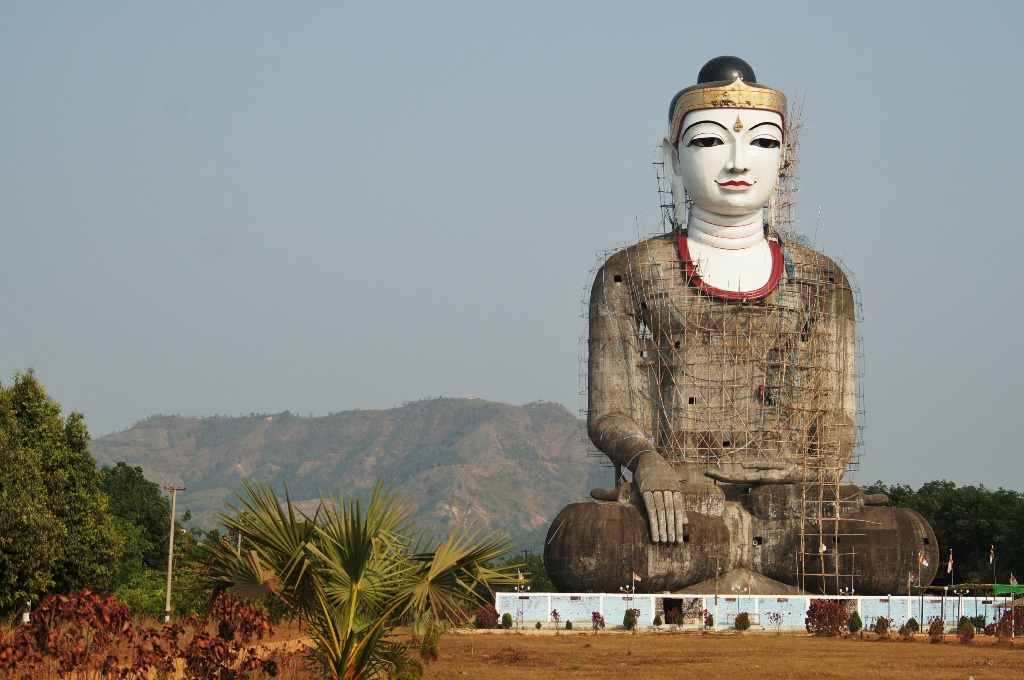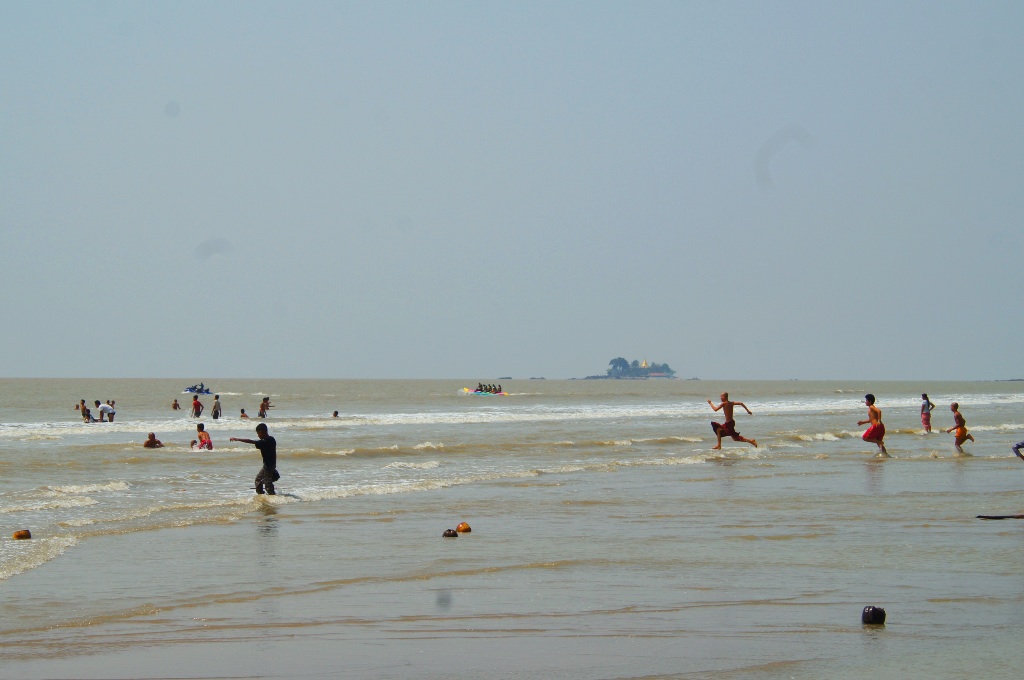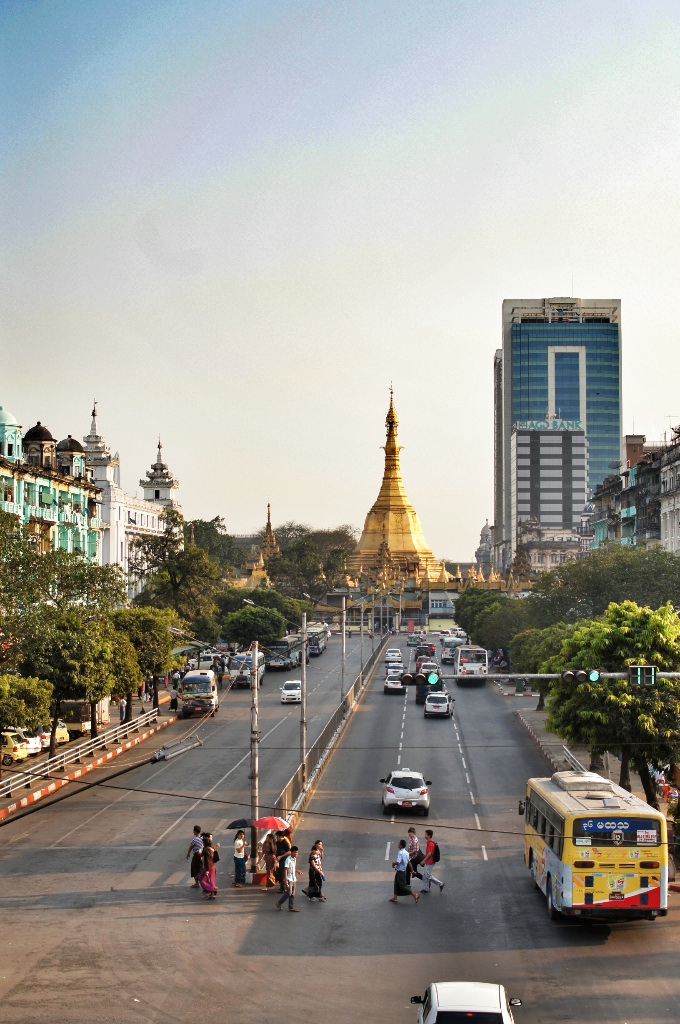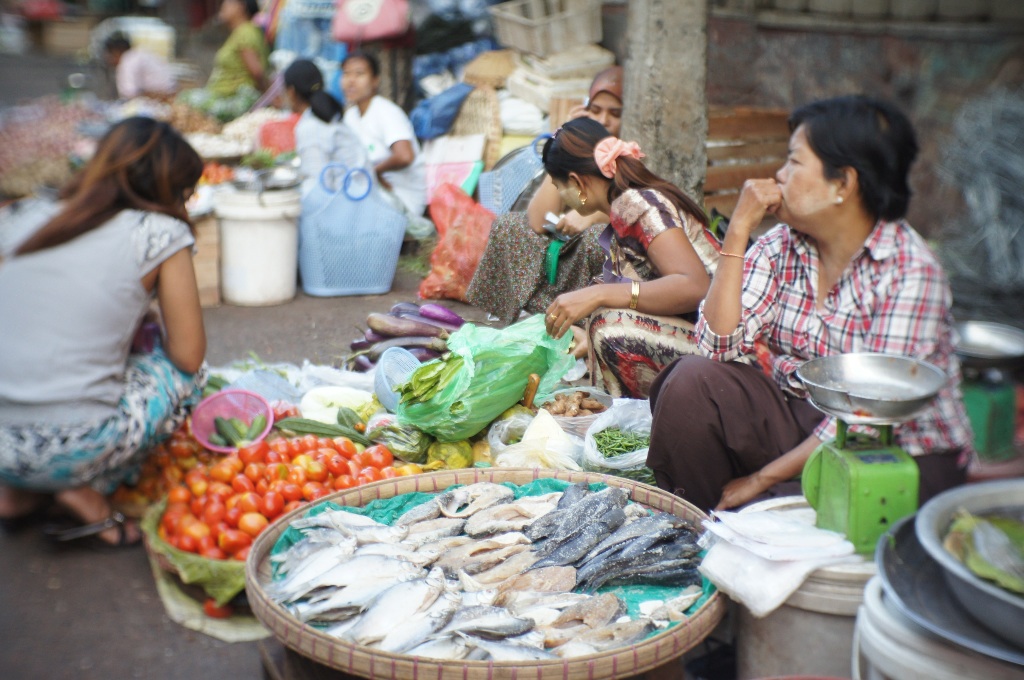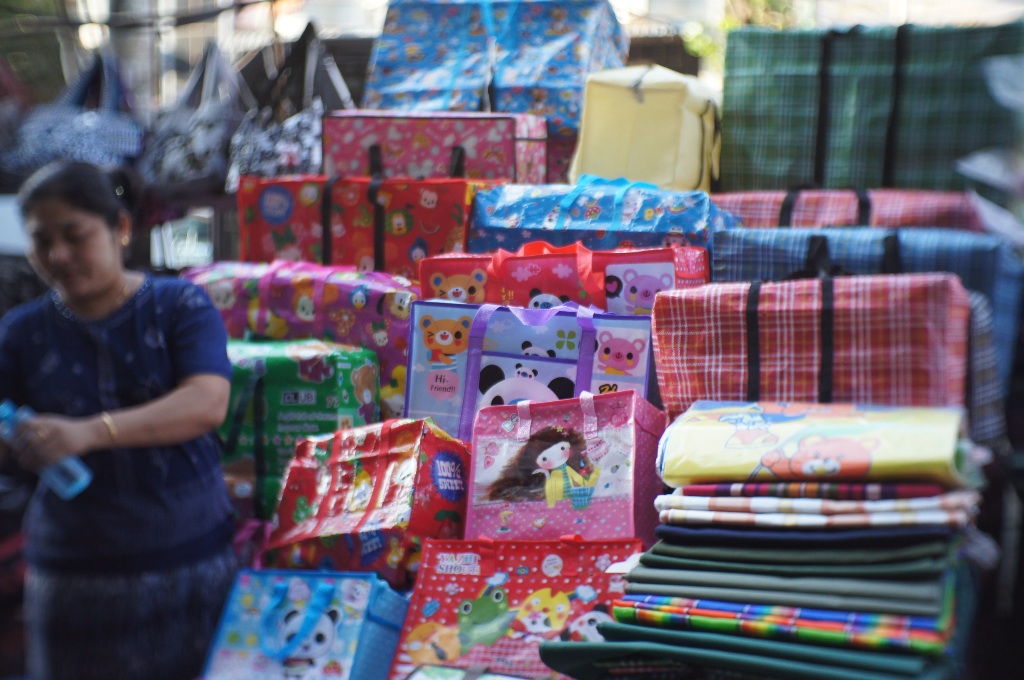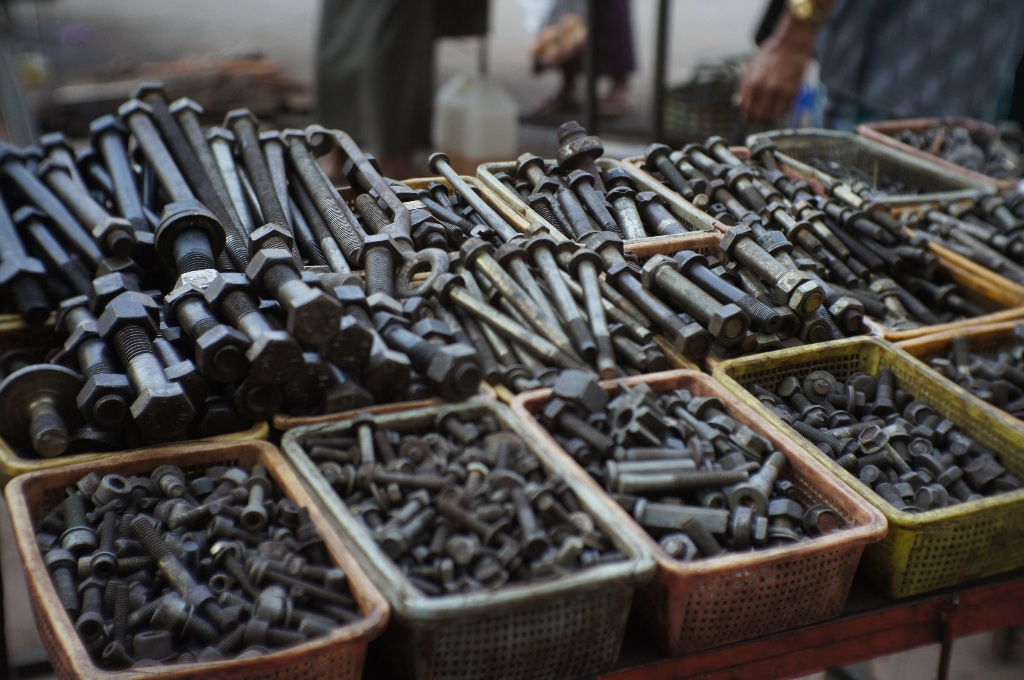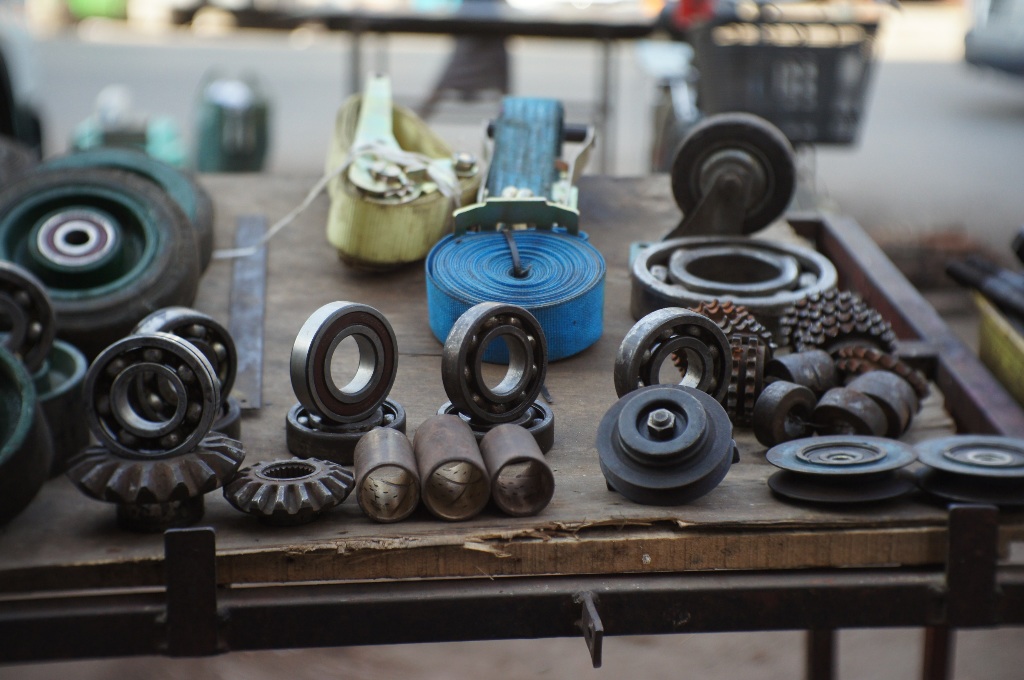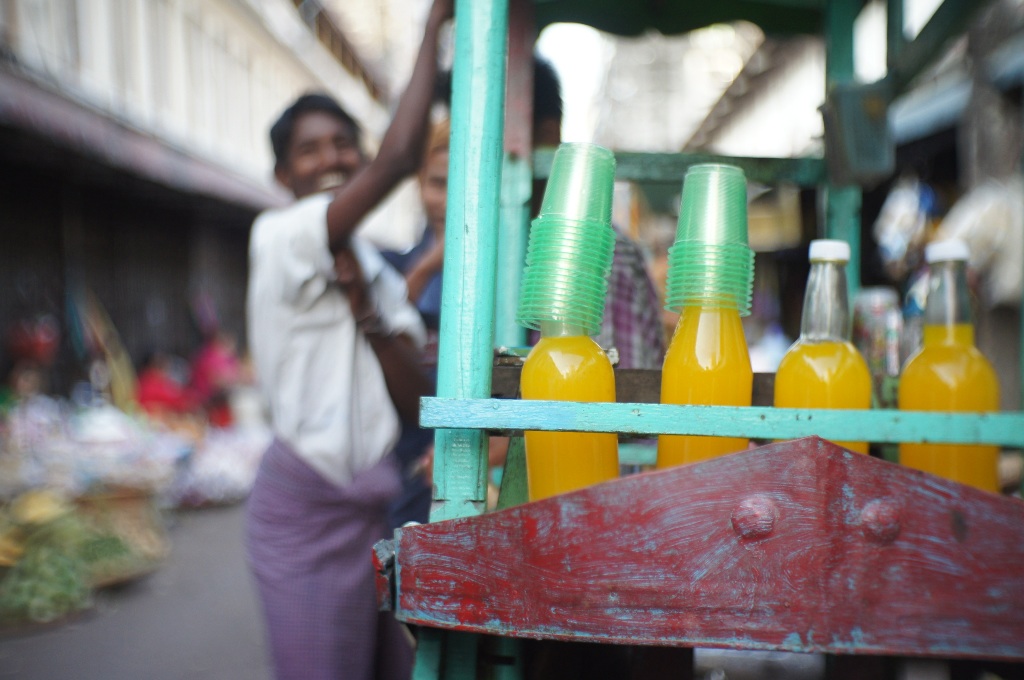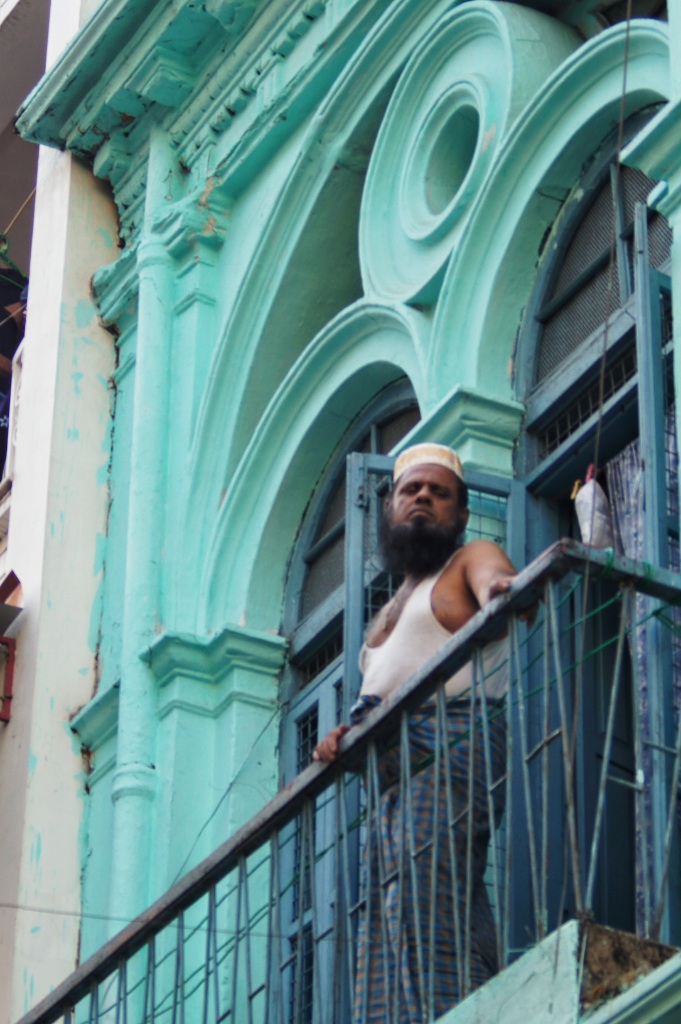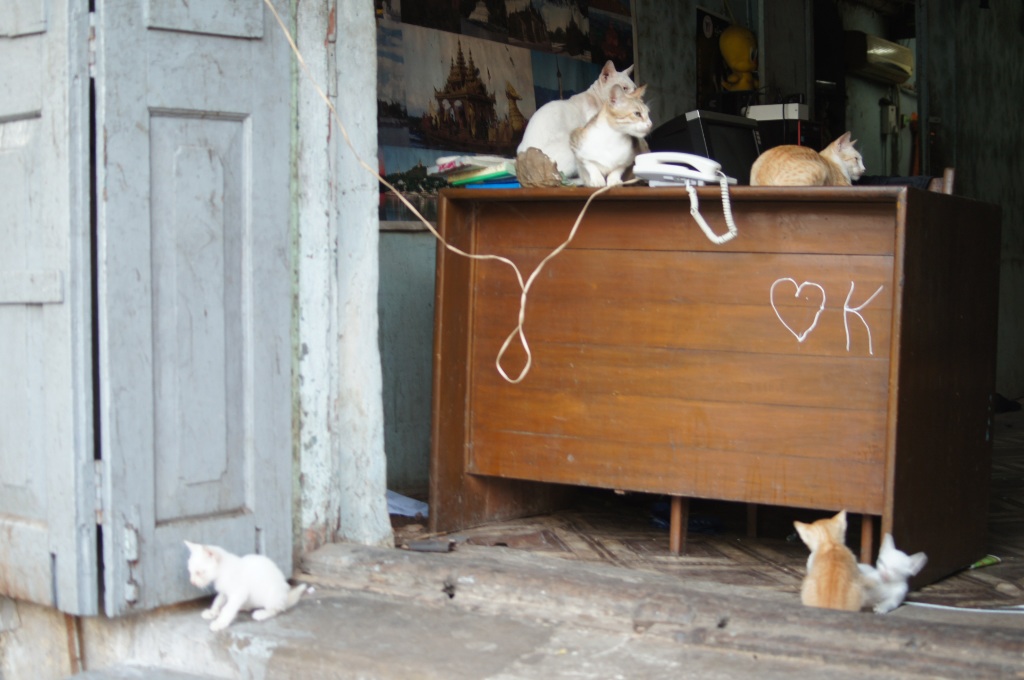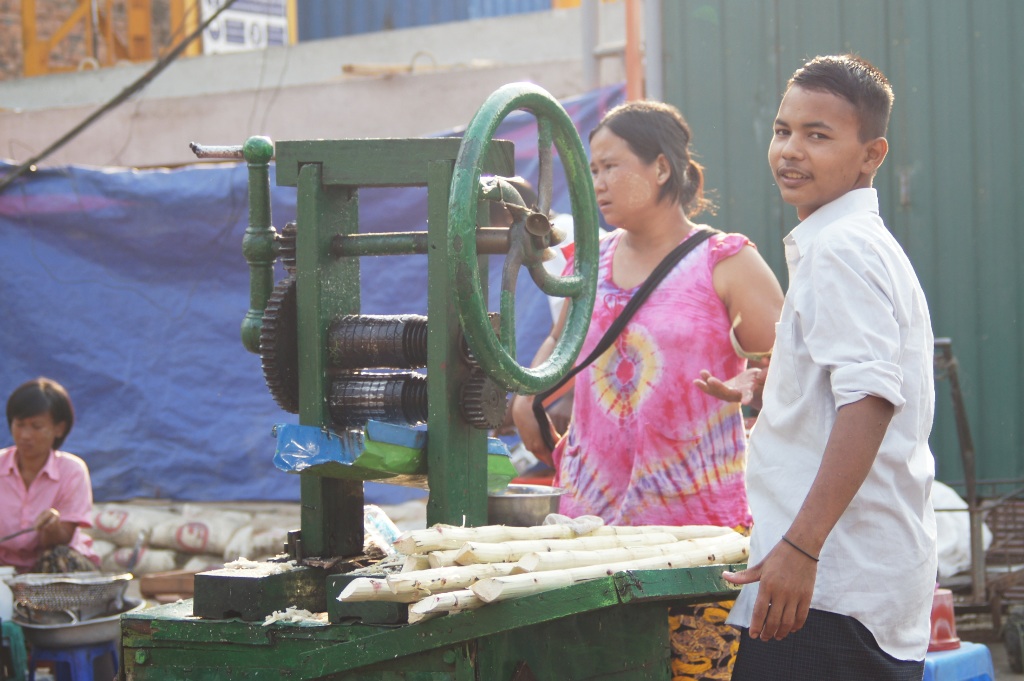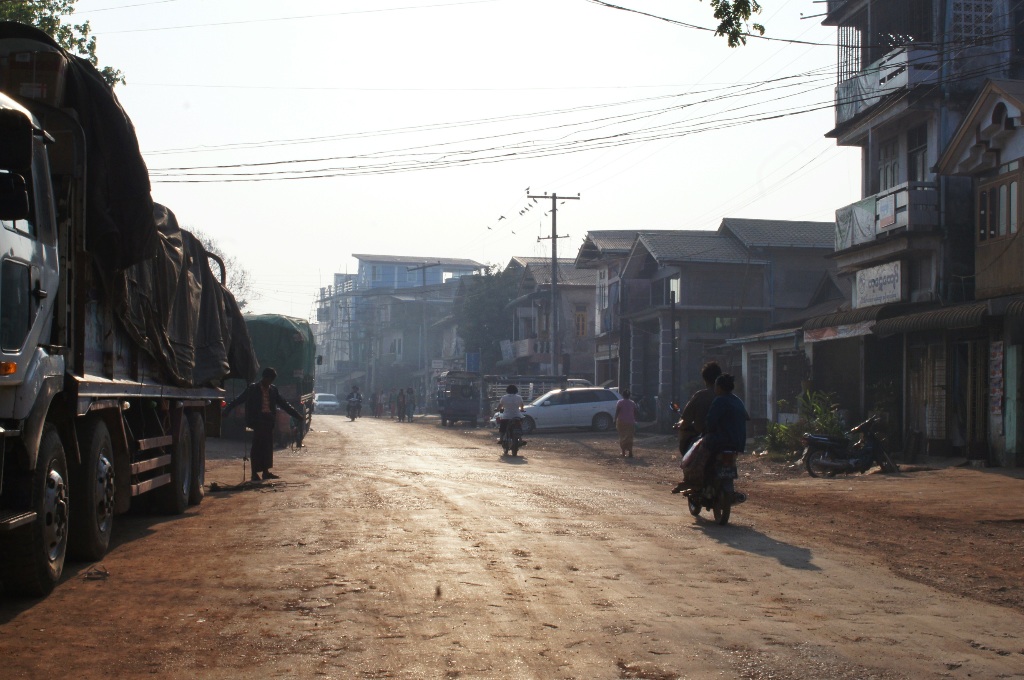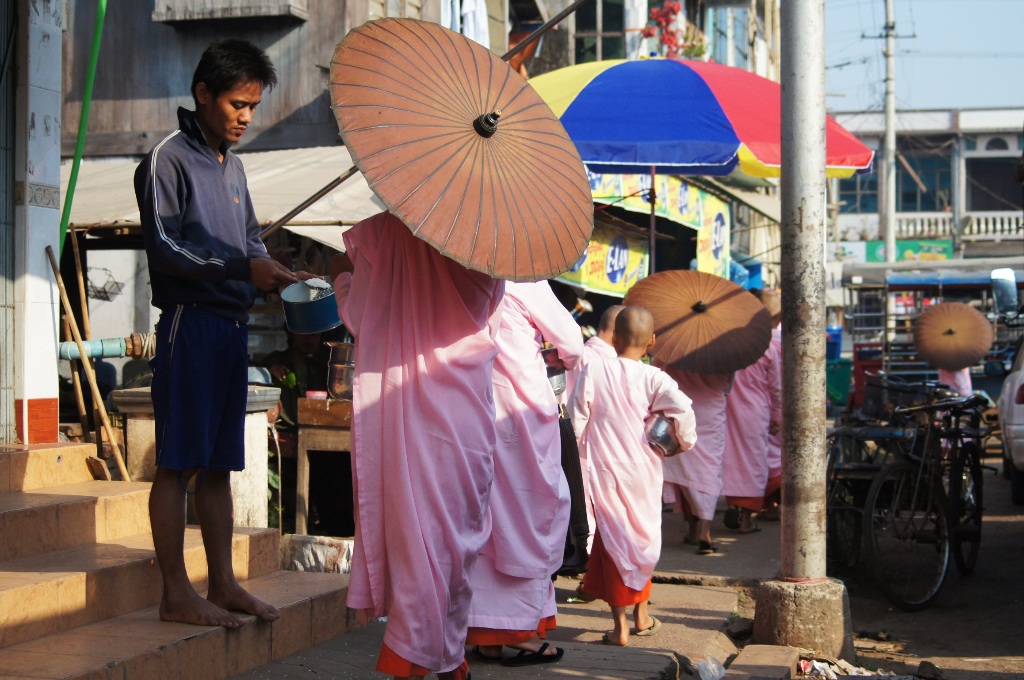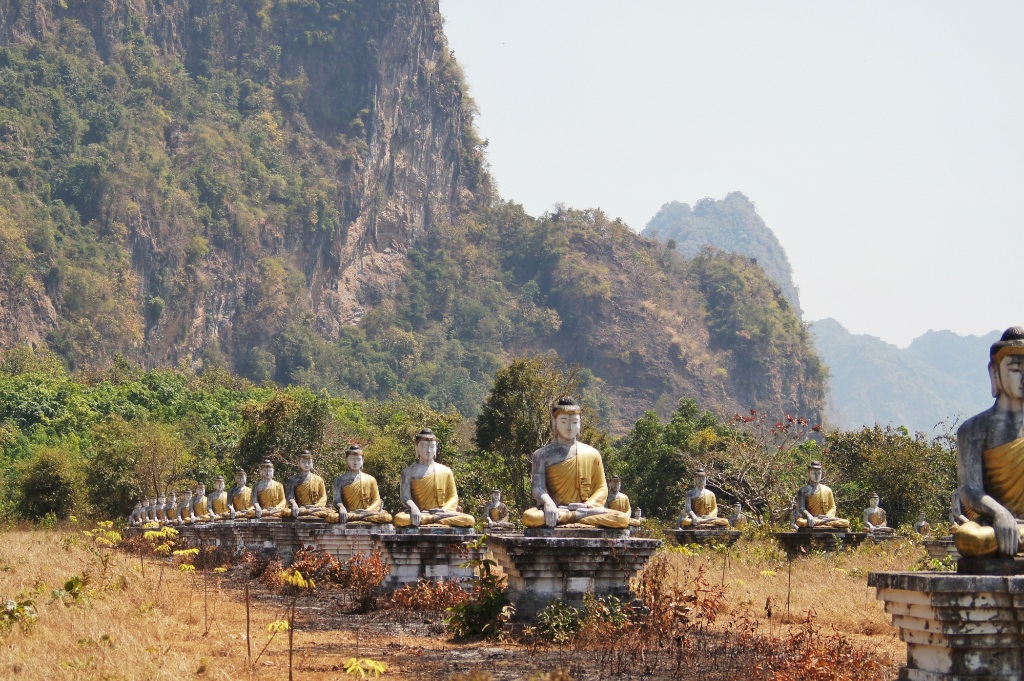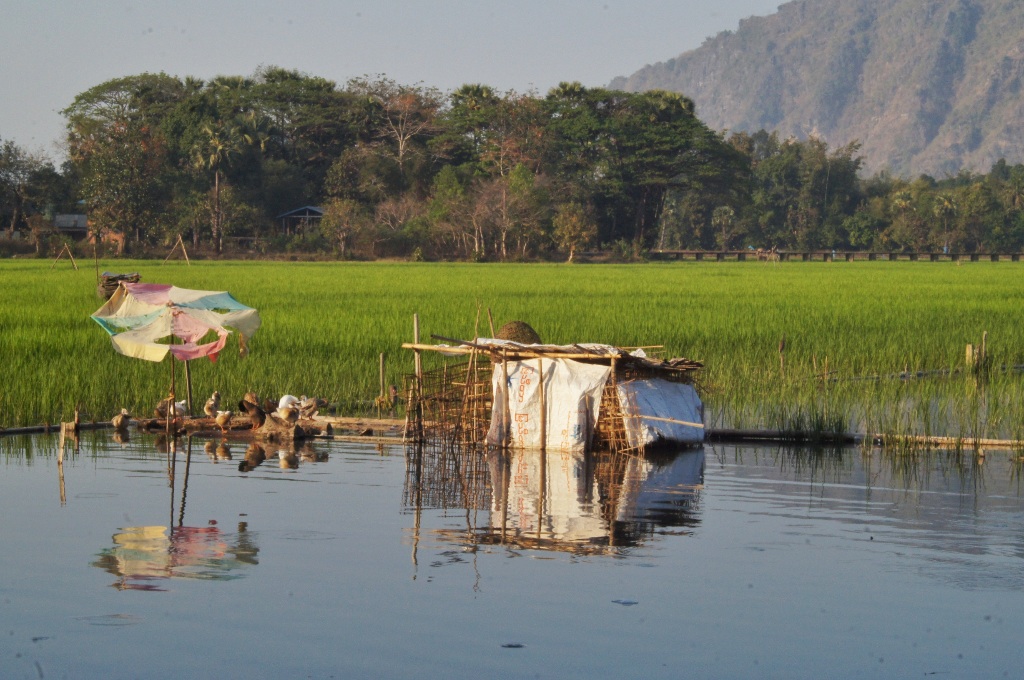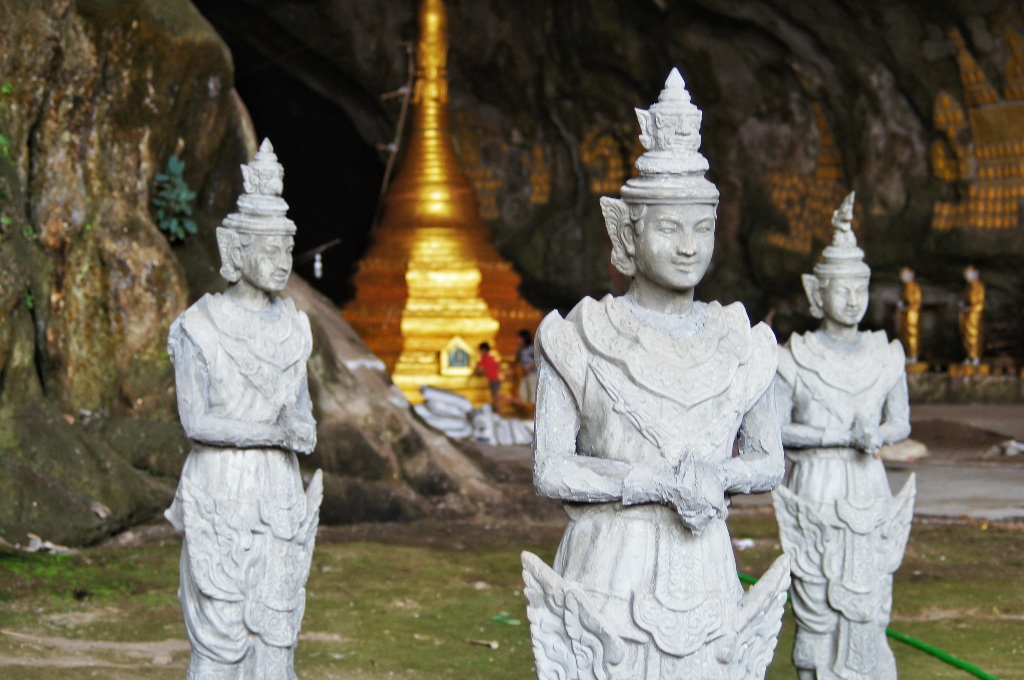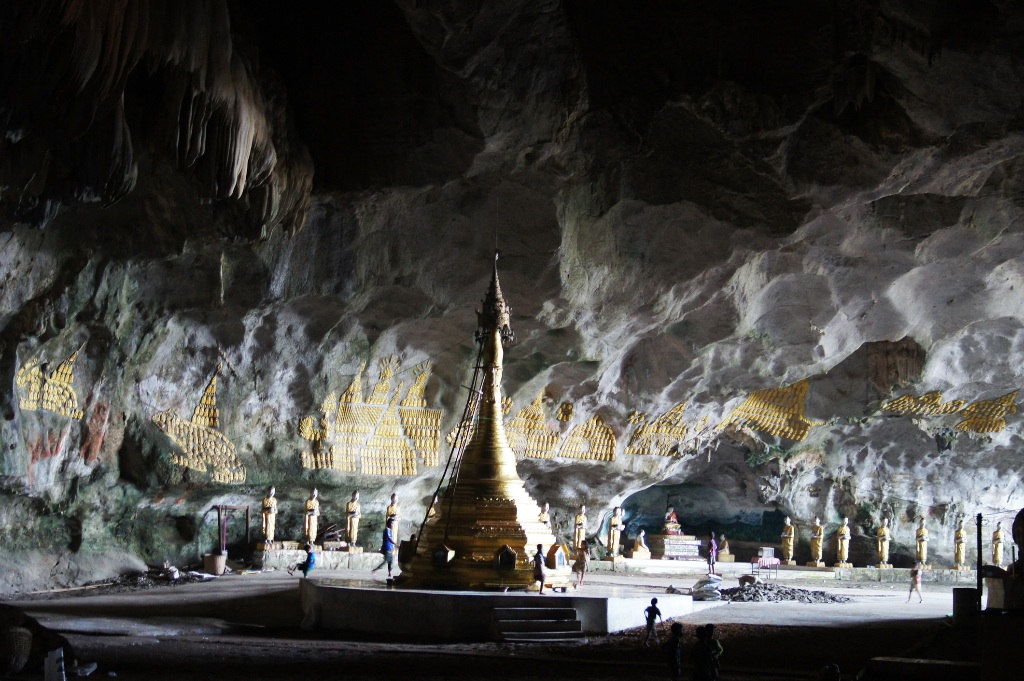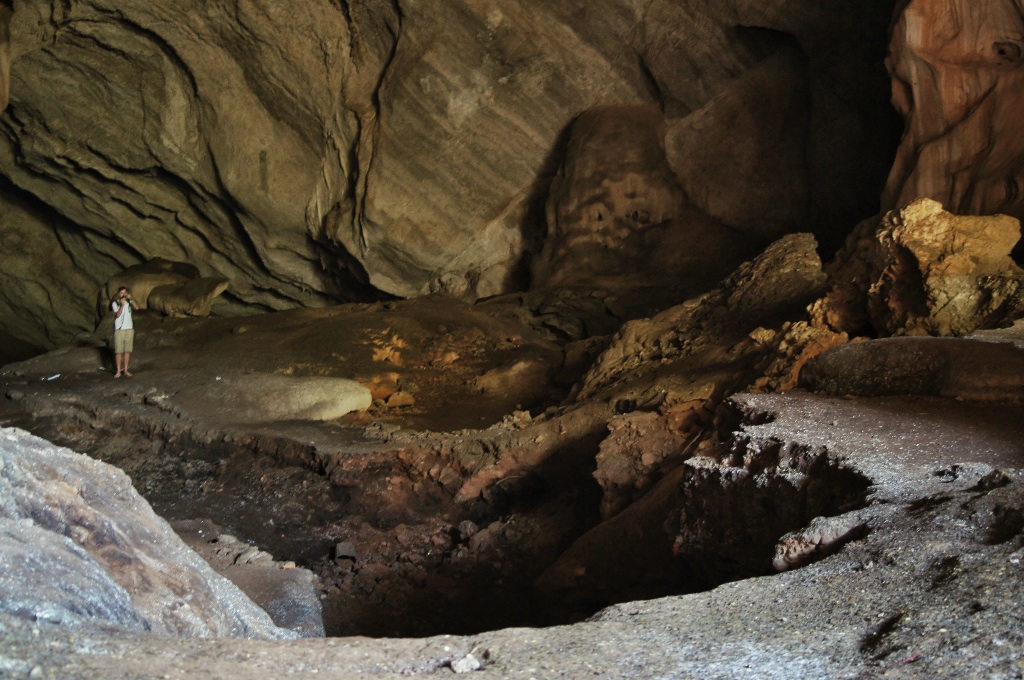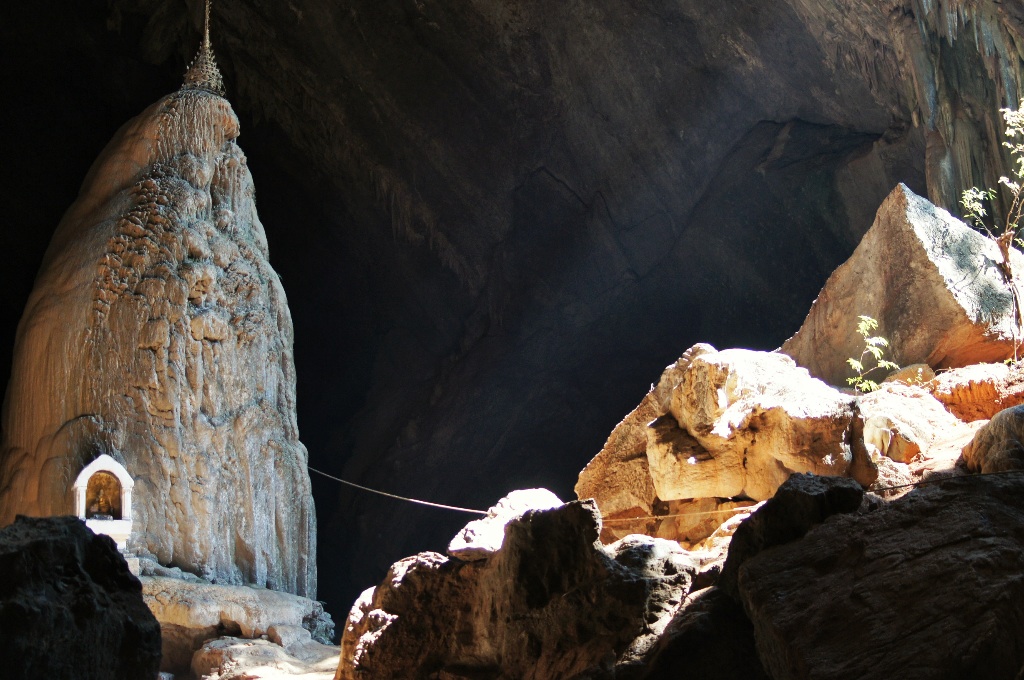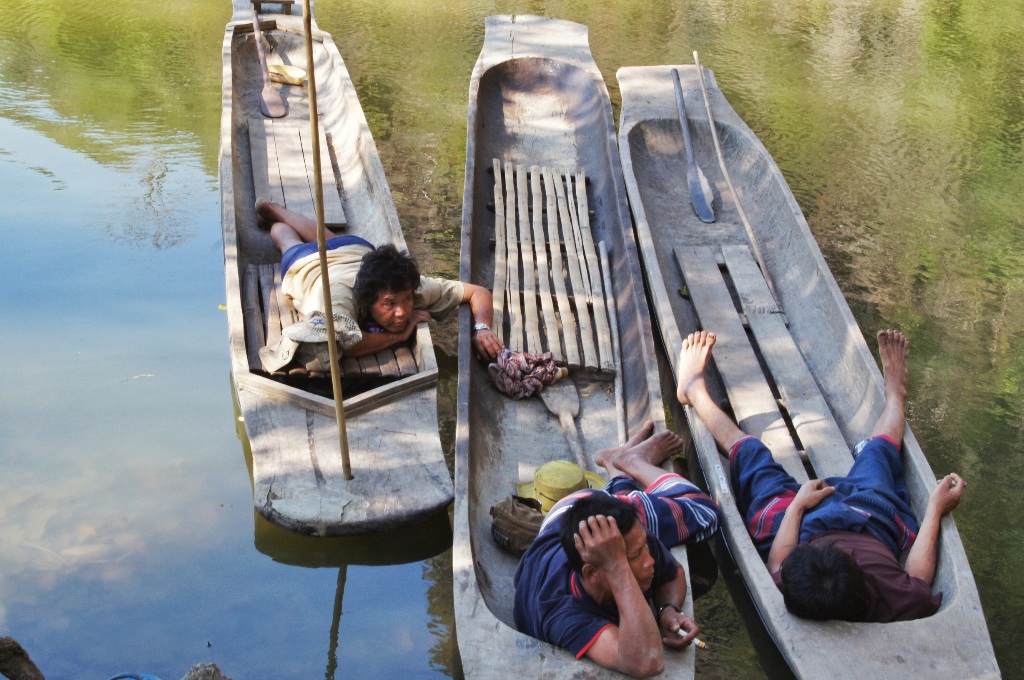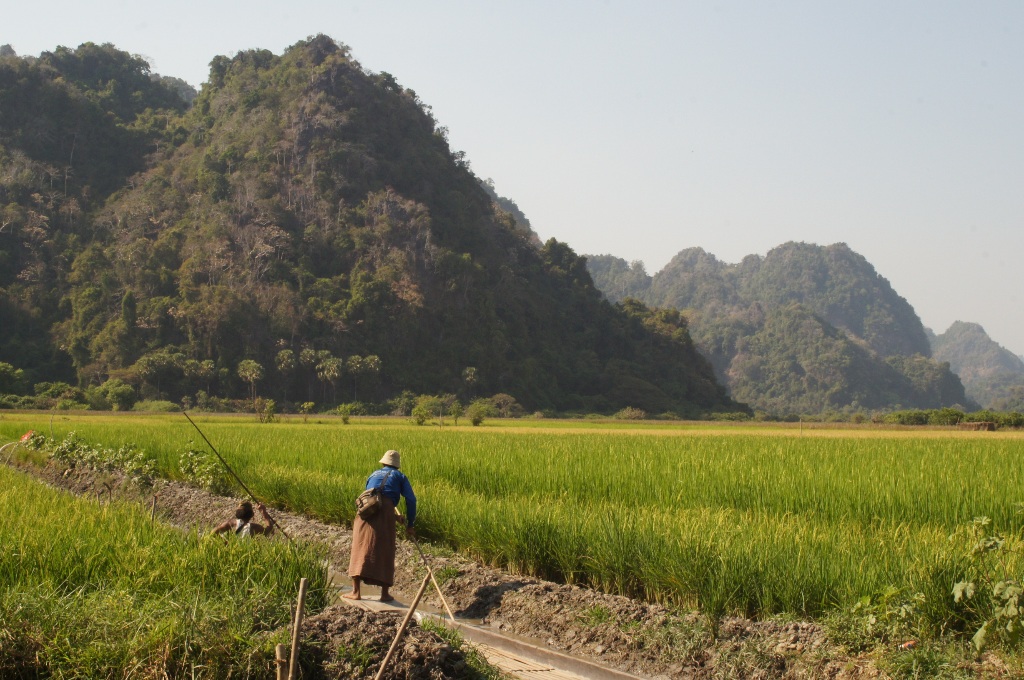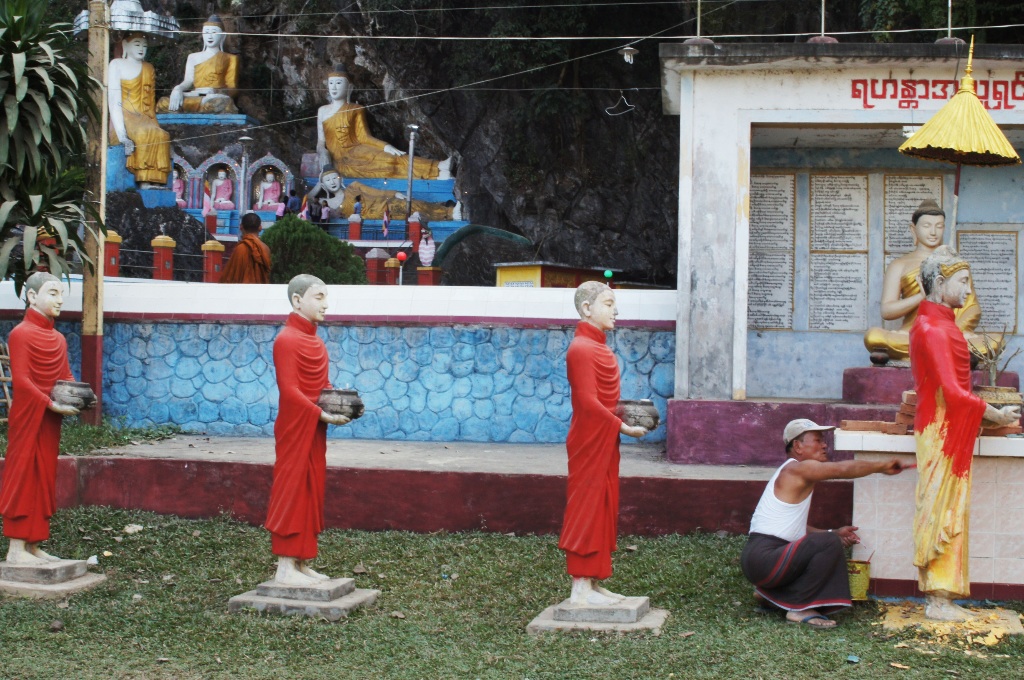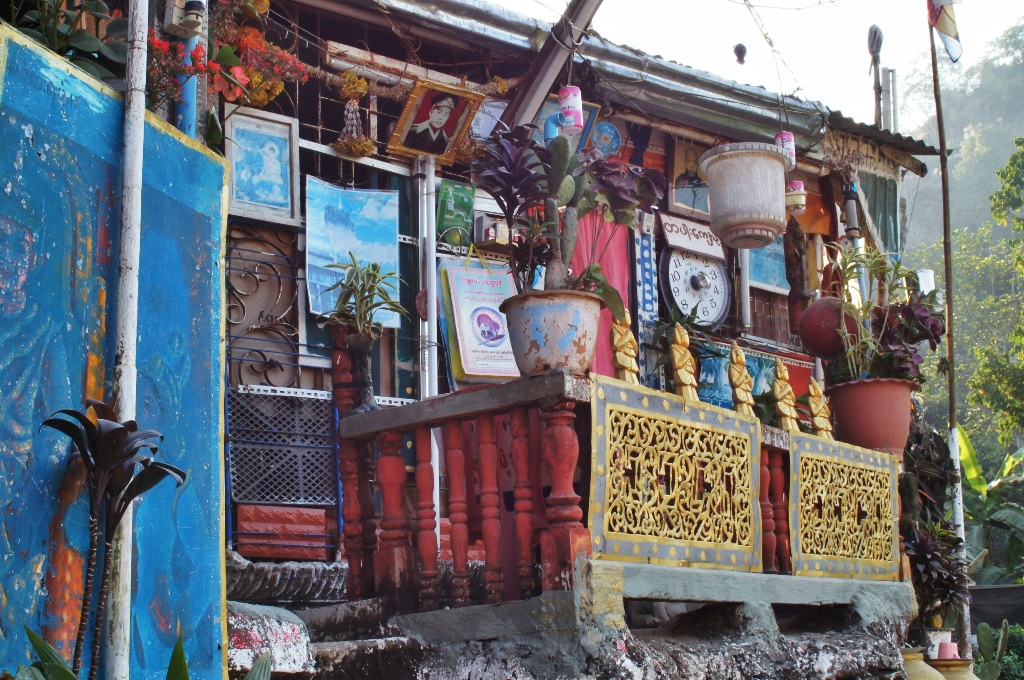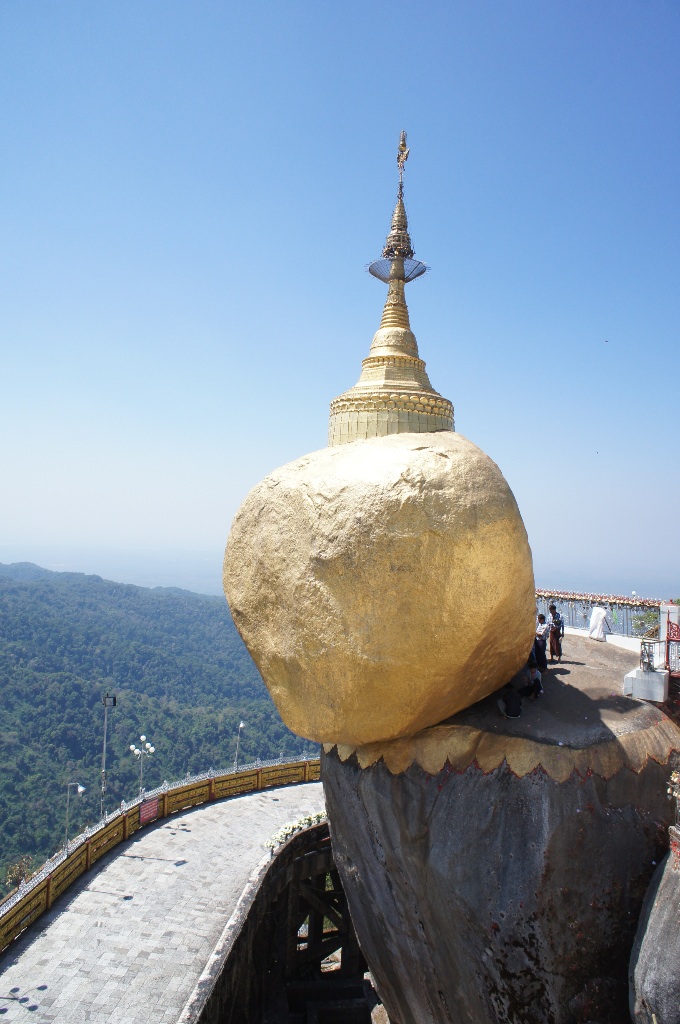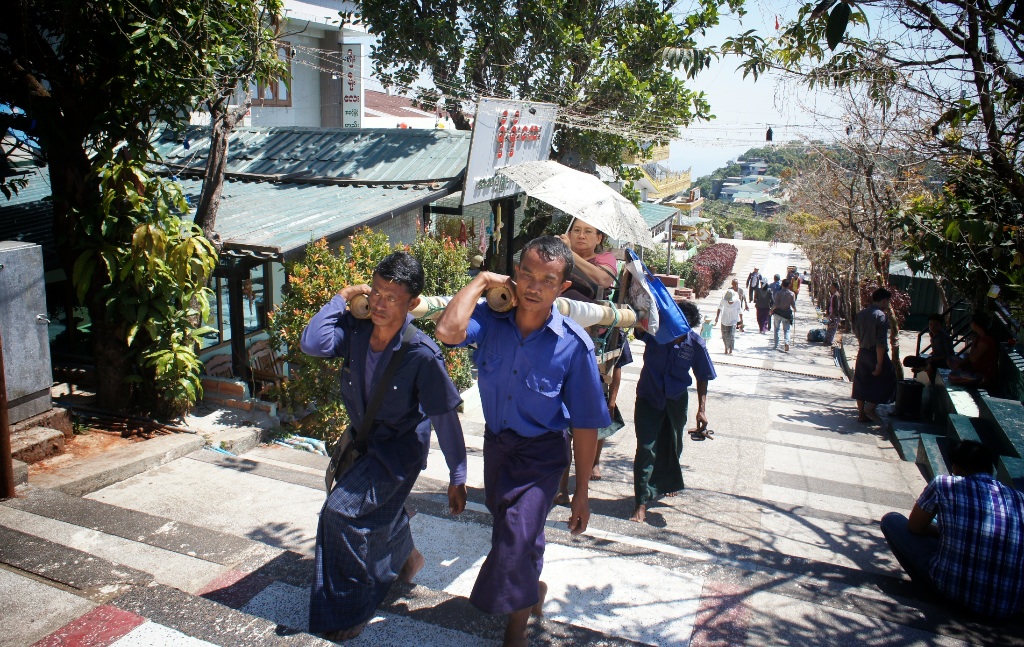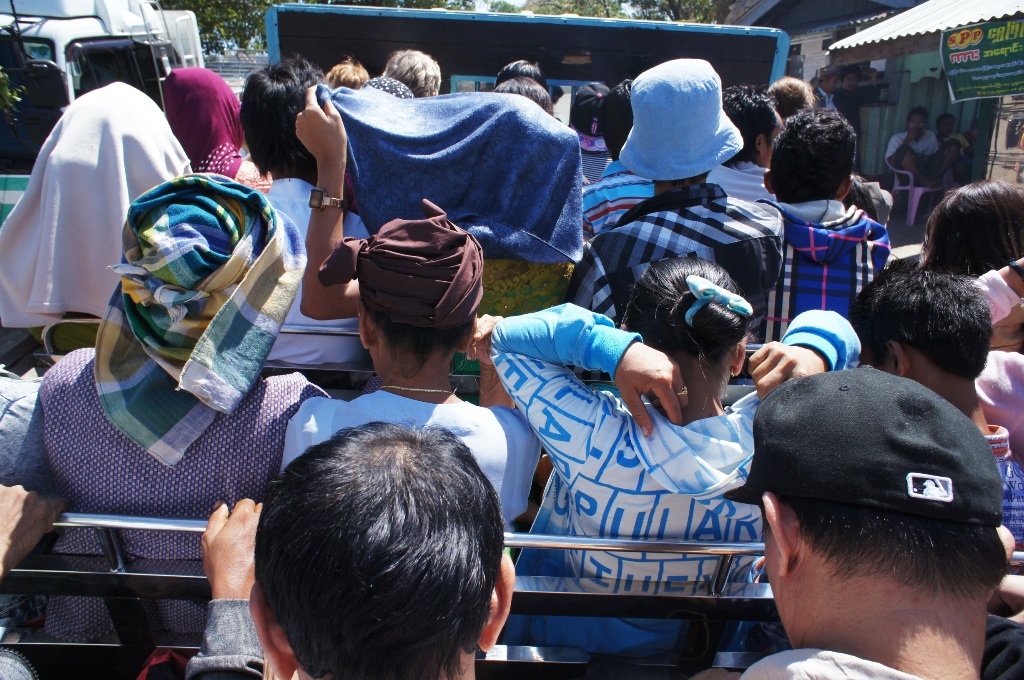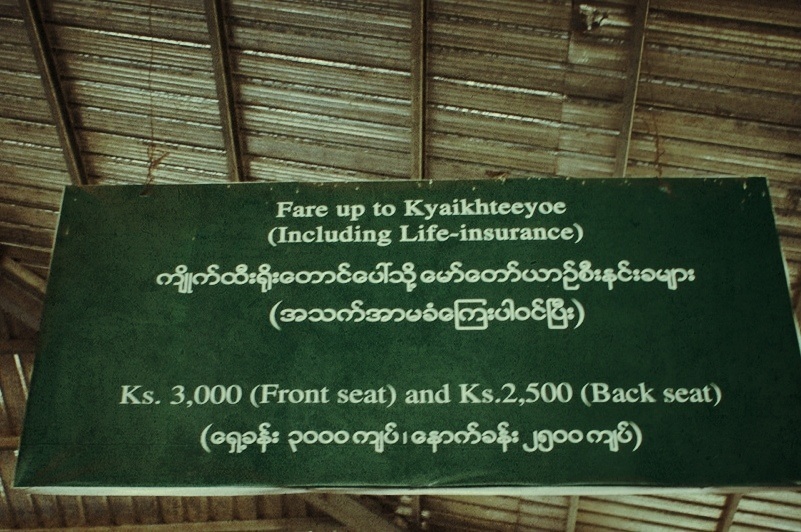A boat ride through a cave near Hpa An in Myanmar. Best three dollars ever spent.
Tag Archives: Myanmar
Myanmar notes (Part 2 of 2)
The years of isolation and unique culture have made Myanmar look different on several levels. The national dress of choice is a longyi, a type of skirt equally worn both by men and women. Even though some men wear Western clothes (read: jeans and a t-shirt), longyi remains widely popular and is worn on all kind of occassions. Another striking difference is the liberal use of thanaka, a light yellow paste made out of wood powder and mixed with water, which is used as a go to make-up. The most common use of thanaka is to apply it to one’s cheeks, but there are really no usage guidelines. Some go into lengths of spreading it all over them. The purported benefits of thanaka range from a sun screen and a skin whitener to an anti-fungal agent, but the most important reason seems to be the aesthetic one. Beauty is really in the eyes of a beholder.
The national drug of choice is betel leaf combined with tobacco and limestone. Betel leaf on its own does nothing apart from eliminating a breathe odour and promoting saliva production, but when combined with tobacco and limestone, it forms something similar to Swedish snus. Betel stations are found everywhere and most of the male population seems to be addicted to it. Other than that a prolonged use colours one’s teeth red, as well as walls and roads all over the country are coloured with red spit stains. Just lovely.
Another oddity about Myanmar that sets it apart from the rest of South East Asia is that there is no haggling. All attempts to haggle are returned with a blank stare and a plain no. In the worst case they just walk away, as it happened to us, when trying to negotiate a taxi ride price at 5AM in the morning in Bagan. This “no haggling” culture made me thinking that it must be weird to locals to see wealthy foreigners come to their country and try to get a couple of dollars off the items with a fixed price.
Buddhism is taken seriously in Myanmar. Meditation is taught in schools and students meditate every day for 15 minutes before classes start. Locals spent their holidays doing vipassana retreats and Buddha TV is a number one channel in Myanmar. Buddhist mantras are played in tourist buses, before they switch to Myanmar pop. Monks have celebrity statuses with their faces plastered over billboards all over the country and stupas are literally everywhere. Yet for such a Buddhist country, the government has been historically heavily intolerable to any opposition. This is changing too with democracy movements no longer being outlawed and some kind of democratic election process being set up. Still the army presence is clearly visible in the country. Soldiers and army bases were seen on multiple occasions during our stay in Myanmar.
I see little reason to visit Myanmar as a tourist again in the near future. After two and half weeks we ran out of things to see and got the impression that this was it. There are undoubtedly many other things to see and do in Myanmar, but due to poor marketing they are left to be discovered. Indeed, in the current form Myanmar is not quite a right country for a tropical vacation, especially when you compare it to its neighbours. Still if you like to see the country, which is something I definitely recommend, now is the right time before tourism industry really blows up. On the other hand, I would love to visit Myanmar again for meditation. Meditation centers are found all over the country and vipassana courses There is even a separate meditation visa available to simplify entering the country for meditation purposes. Who knows where all this tourist development will lead Myanmar to, but maybe they will be able to capitalise on their Buddhist heritage and promote a unique kind of tourism.
Yangon, the capital that is not
Yangon is the former capital of Myanmar that still feels like one. Despite its size Yangon feels provincial and sleepy. Most of the architecture is from the colonial times with only a few modern concrete and glass towers here and there. A great share of buildings looks like they have never been renovated, which gives Yangon a decaying, but yet charming look. There is no clear city centre or at least there is not much to do there for a tourist. Traffic is not yet unbearable, but it is steadily heading there. Motorbikes are banned, there are a lot of bicycles and unlike in other Asian cities, people actually walk. Sidewalks are wide enough, but numerous shopping stalls that sell everything under the moon make walking challenging. Taxis are ubiquitous and relatively cheap, as well as drivers almost do not attempt to rip you off. As with elsewhere in Myanmar, dust is everywhere.
To be honest there is not much to see in Yangon in terms of sights. Shwedagon Pagoda, the most significant pagoda in Myanmar, looks exactly like all the rest of them, only bigger and shinier. In a true anti-government activism fashion, we tried to dodge paying for the entrance tickets to the pagoda, but were caught every time. We eventually just gave up on it and did not even feel bad about not seeing it. Other than that there are the rather mediocre Kandawgyi Park and Bogyoke Market, which was closed at the time we went there. Despite the lack of sights and activities, Yangon has a nice vibe to it with its brisk street-life. It feels non-generic and the absence of global capitalism make it rather unique. No Starbucks, KFC and McDonalds on every corner there.
We were lucky to stay at old friends’s place for a couple of days, which gave us a much needed breather and a home experience with things like making pancakes and doing dishes. Myanmar wine with decent bread and gourmet cheese made the impression solid. Thank you, Inka and Pekka. It was lovely.
The beautiful Hpa An
Hpa An, a small town, not too far away from Mawlaymyine has all the ingredients to become a prime boutique resort in the future. A small population, relaxed atmosphere, a river, scenic rice fields, picturesque temples, mountains to climb and caves to explore. While the town itself is rather unremarkable, the surroundings are beautiful, yet unspoiled. No ticket charges (a rarity in Myanmar!) and almost no other tourists. Guesthouses offer a cheap and convinient way to check Hpa An sights out in one day. Just for $5 they will take you on a day trip covering all the sights that will easily become a highlight of your Myanmar experience. Best five dollars ever spent.
In a way Hpa An reminded me of Pai, Hoi An and Yangshuo, minus the tourist infrastructure part. For now Hpa An is anything but touristy. Four hotels, two mediocre restaurants with menus in English, one even worse cafe and zero shops. This is how far Hpa An caters to foreign visitors. In this particular case, the lack of tourist services was a clear drawback. After seeing all the sights in one day, there was nothing left to do, no places to hang out and no people to meet. One day spent there and we were ready to move on. On the other hand Hpa An provided an authentic insight of the town life, but then again we got plenty of such experience in Myanmar.
If in the future Hpa An evolves into another Pai or Yangshuo, in a true hipster fashion I will be able to boast that I was there before it was cool.
Pilgrimage to Golden Rock
Golden Rock or Kyaktiyo is is one of the prime tourist sights in Myanmar. It is literally a golden rock (because of all the golden stickers countless pilgrims attach to the rock for good luck and what not) with a stupa on top of it positioned on top of another rock in a funky way. According to the legend a hair of Siddharta Gautama inside the stupa is what maintains the delicate balance. True or not, Golden Rock is a major pilgrimage destination, which draws thousands of pilgrims from all over the country. Now he rock itself was a huge let down and would not recommend anyone to visit it, unless if you are a hardcore Buddhist. The main problem with it was the rock looks tons better on pictures than in the real life. What promotional pictures do not show is the surroundings of the rock, which are quite built up with shops, hotels and all things commercial. After you make it through all this crust, the rock looks rather disappointing. However, the point of the pilgrimage is not the destination, but the journey, which was quite interesting indeed.
The idea to visit Golden Rock was born spontaneously. Sometime on the way out of Inle to Hpa An by night bus, we decided to do a small detour to Golden Rock. So upon arriving to Yangon just before the sunrise, a friendly local guided us to the bus to Kyaikto (whether it was for a small fee or totally gratis remained undetermined). Another four hours in the bus and we were finally in Kyaiktiyo, where they put us we on a taxi going to Kinpun, a village in the base of the mountain hosting the rock. In Kinpun we left our backpacks at a hotel and immediately proceeded to take a truck leading to the rock. Some words should be said about trucks, which for whatever reason are the only allowed form of transportation to Golden Rock itself. Trucks are of a regular kind with an open platform used more commonly for transporting cargo. In order to transport people there are benches that can fit around 50 people. The driver really made sure the truck was filled up to the max and squeezed more people against the loud protests of white passengers until the platform was completely full. The benches did not have back support, so having the platform filled up with people doubled as a safety precaution. The ride was intensely scary and half an hour spent in the truck was arguably the most exciting part of the journey. The notice about life insurance included in the ticket price started really making sense during the ride.
Anyhow, we spent an unremarkable hour at the rock and took a truck back to the hotel, where we immediately booked tickets to Hpa An. Half an hour later a guy on motorbike appeared to take us to the bus stop in Kyaiktiyo. We expressed our concerns about fitting three people and two backpacks on motorbike with no helmets, but after a short, but fierce discussion they assured us it was totally safe and the promised travel time magically halved. Well, they turned out to be right about the safety part, half an hour later (instead of the promised 15 minutes) we made it safely to the bus stop. The bus never showed up though (whether there was a bus in the first place remained another mystery), instead the motorbike driver put us on a pick-up shared taxi and gave instructions to the taxi driver what to with us. Three hours later we made it to Thaton, where friendly locals guided to another taxi and finally arrived to Hpa An just before the sunset.
The end result was 24 hours of travelling with almost no waiting between changing vehicles and minimum effort on our part. In a way it was the most difficult, but at the same time the easiest journey I have ever taken. As if, the whole journey was predetermined and we were just going with the flow. Even if the rock was unremarkable, the journey was one of the top highlights of adventures in Myanmar.
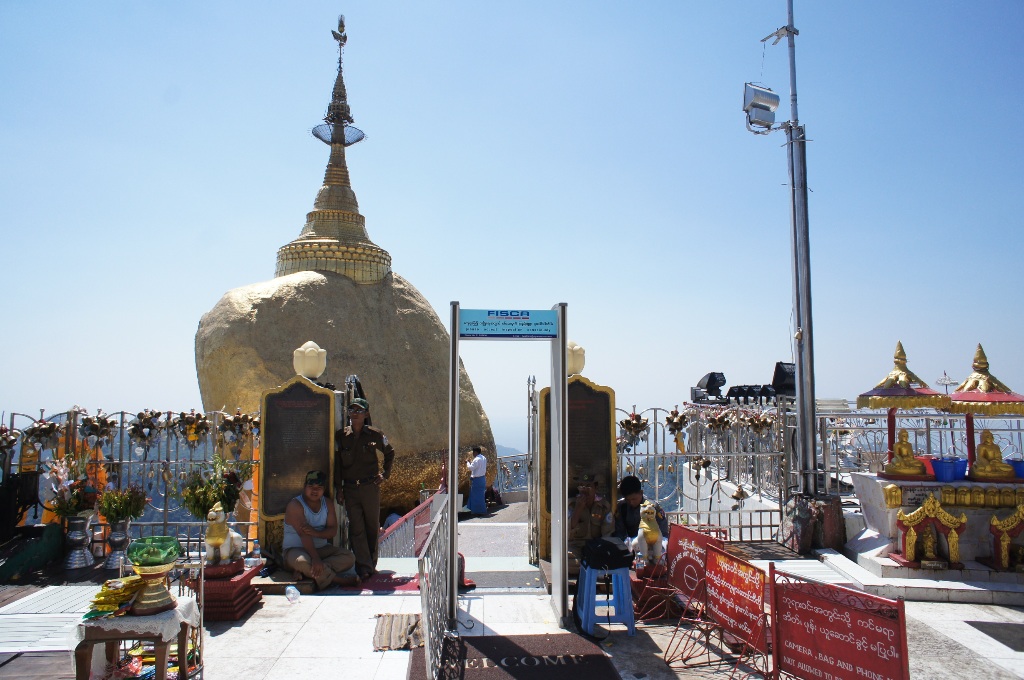
A less flattering view over the rock. Going through a metal detector and leaving any bags outside is mandatory.
